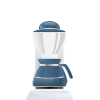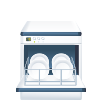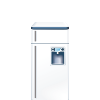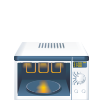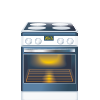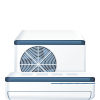Your circulatory system is a complicated network of capillary that plays an important duty in maintaining your general wellness. Among the various types of capillary, blood vessels are typically overshadowed by their even more well-known counterparts, arteries and capillaries. Nonetheless, capillaries have their own vit uromexil forte v├®lem├®nyal functions that are crucial for the correct functioning of your body. In this article, we will discover what blood vessels do and how they contribute to your total health.
Veins are a kind of capillary that delivers blood back to the heart. Unlike arteries, which bring oxygenated blood far from the heart, veins carry deoxygenated blood back to the heart for reoxygenation. This procedure is vital for the proper performance of various organs and systems in your body.
1. Return Blood to the Heart
The primary feature of blood vessels is to return deoxygenated blood from the body’s cells and organs back to the heart. As blood trips through the arteries and veins, it supplies oxygen and nutrients to the cells. However, as soon as these essential resources are depleted, the blood ends up being deoxygenated and loaded with metabolic waste products.
Capillaries, with their slim wall surfaces and valves, help with the return of this deoxygenated blood by avoiding it from streaming in reverse. The shutoffs function as one-way doors, permitting blood to flow towards the heart and protecting against any backflow. This procedure ensures a continuous blood circulation of blood throughout your body.
The capillaries operate in conjunction with skeletal muscle mass to pump blood back to the heart. When your muscle mass agreement and kick back throughout motions, they put in stress on the blood vessels, assisting to push the blood upwards versus gravity. This device is particularly essential in the lower extremities, where blood flow against gravity is more difficult.
2. Store and Release Blood
Capillaries serve as blood reservoirs, with the ability of keeping a substantial amount of blood. The walls of veins are thinner and a lot more versatile contrasted to arteries, allowing them to hold a bigger volume of blood. This blood storage tank feature helps regulate blood quantity and maintain a steady blood pressure.
During periods of raised physical activity or stress, your body might need more blood and oxygen. Capillaries play a critical function in fulfilling these needs by releasing saved blood back right into blood circulation. This procedure helps to maintain appropriate oxygen supply to your organs, muscular tissues, and tissues.
3. Control Body Temperature Level
Your body controls its temperature via a procedure called thermoregulation. Veins play a crucial role in this procedure by aiding to dissipate excess heat from your body.
When your body temperature level increases, the capillaries near the surface area of your skin expand, permitting more blood to flow via them. As the cozy blood gets to the surface area, warm is released into the atmosphere via a procedure called convection. This helps to cool off your body temperature level and avoid getting too hot.
On the other hand, when your body is subjected to chilly temperature levels, the capillaries constrict, reducing blood flow to the skin’s surface area. This device helps to conserve heat and maintain your body’s core temperature.
Recap
Capillaries play an essential function in your circulatory system by returning deoxygenated blood back to the heart. Their features consist of returning blood to the heart, working as blood storage tanks, and assisting to manage body temperature level. Recognizing the importance of capillaries can help you value their role in keeping your total health.
- Veins return deoxygenated blood to the heart for reoxygenation.
- They work keramin in combination with muscular tissues to pump blood versus gravity.
- Veins shop and launch blood to preserve blood quantity and pressure.
- They help dissipate excess warmth from the body through extension.
- Veins constrict in chilly temperatures to save warmth.
By valuing the functions of veins, you can take steps to keep your circulatory system healthy. Routine exercise, keeping a healthy weight, and avoiding long term durations of sitting or standing can assist advertise appropriate blood flow and avoid problems such as varicose veins and deep blood vessel thrombosis.
Keep in mind, your veins are an indispensable component of your blood circulation system, and their appropriate performance is vital for ideal health and wellness.

